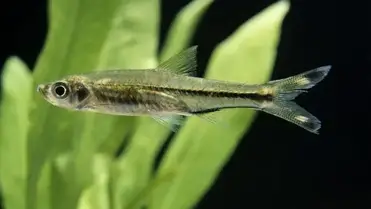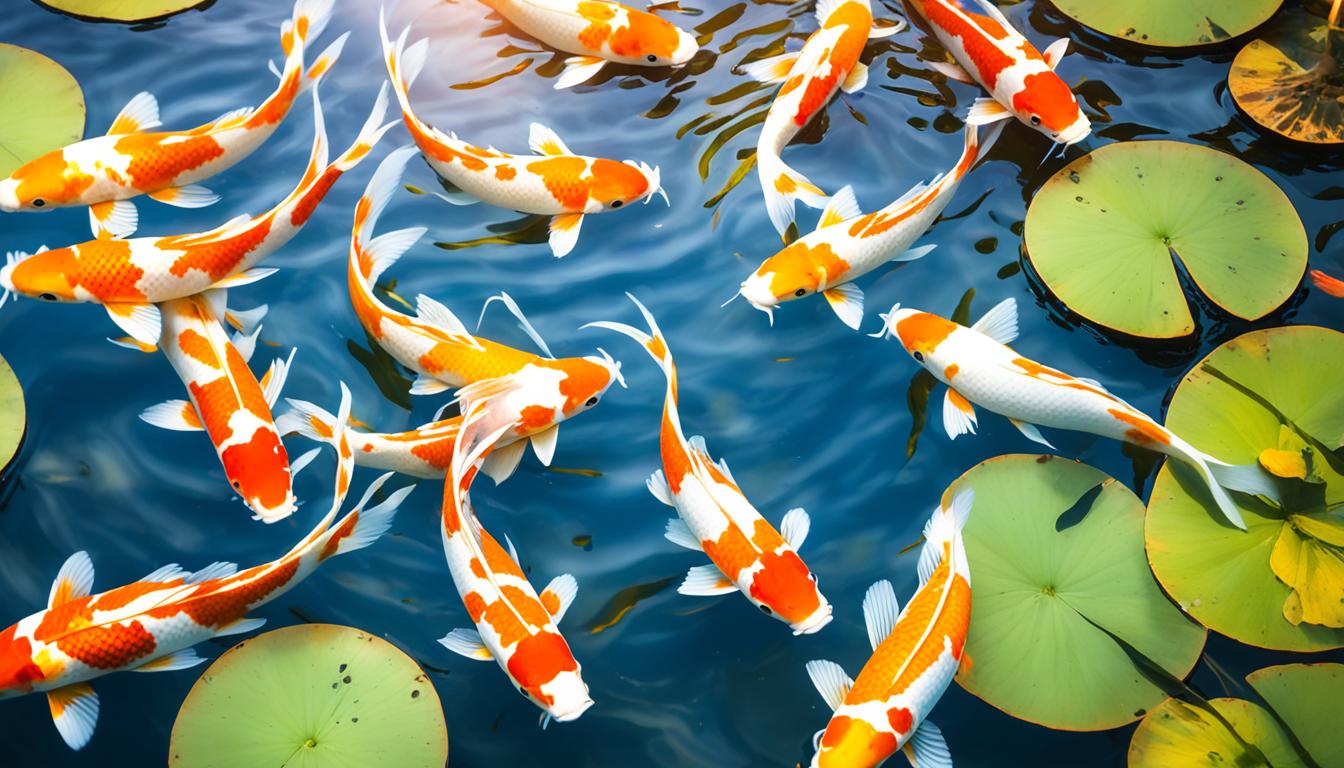Scissortail Rasboras are peaceful, gregarious fish that do well in community aquariums and should be kept with at least a half-dozen of their own kind. They also make excellent companions for other species of rasboras.
Introducing Scissortail Rasboras, a peaceful and gregarious fish species that thrives in community aquariums. These fish thrive when kept with at least a half-dozen of their own kind, allowing their vibrant colors to shine and making them feel at home.
They also make great tank mates for other species of rasboras. With their peaceful nature and social behavior, Scissortail Rasboras are a popular choice among aquarium enthusiasts. In this guide, we will explore the size, tank size, feeding schedule, and origin of Scissortail Rasboras, as well as tips for their care to ensure they thrive in your aquarium.
Table of Contents
Tank Size And Setup
The minimum tank size for Scissortail Rasboras should be spacious enough, allowing them to swim freely. Ideal water parameters for these fish include a temperature range of 72-82°F, a pH level between 6. 5-7. 5, and a moderate water flow.
When it comes to suitable tankmates, Scissortail Rasboras are peaceful and gregarious, making them great additions to community aquariums. It is recommended to keep them in groups of at least six to bring out their vibrant colors and help them feel comfortable.
Additionally, other species of rasboras can also serve as excellent companions for Scissortails. When setting up a tank for these fish, ensure there is ample swimming space and provide hiding spots with plants and driftwood.
Size And Lifespan
The Scissortail Rasboras are peaceful, gregarious fish that thrive in community aquariums. They typically reach a size of around three and a half inches in length. To bring out their vibrant colors and make them feel at home, it is recommended to keep them in groups of at least half a dozen.
Other species of rasboras also make great tank mates for scissortails. When it comes to feeding, they are omnivorous and not too picky. They will readily eat fish flakes or pellets but should be offered a varied diet, including frozen meaty and/or live meaty foods like brine shrimp, bloodworms, and daphnia, to maintain their health and best coloration.
With proper care, these fish can live for about five years.
Feeding And Diet
Scissortail Rasboras are peaceful and gregarious fish that thrive in community aquariums. To bring out their vibrant colors and make them feel at home, it is recommended to keep them in groups of at least six individuals. Other species of rasboras also make great tank mates for scissortails.
When it comes to their diet, these fish are omnivorous and not too picky. They will readily consume fish flakes or pellets, but it is important to supplement their diet with frozen meaty and live foods such as brine shrimp, bloodworms, daphnia, and insect larvae.
Providing them with a varied diet is essential for their overall health and optimal coloration. With proper care, scissortail rasboras can reach an average size of about three and a half inches in length.

Breeding And Reproduction
Scissortail Rasboras are peaceful, gregarious fish that thrive in community aquariums. To bring out their vibrant colors and make them feel at home, it’s recommended to keep them in groups of at least six individuals. They also make great tank mates with other rasbora species.
When setting up a breeding environment, provide plenty of plants for the fish to lay their eggs on. Consider using a spawning mop or mesh to protect the eggs from being eaten by adult fish. Once the eggs hatch, it is important to provide proper care for the fry.
Feed them a varied diet of fish flakes, pellets, and frozen or live meaty foods to ensure their growth and development. With the right conditions and care, Scissortail Rasboras can successfully breed and raise the next generation in your aquarium.
Health And Disease
Scissortail Rasboras are peaceful and gregarious fish that thrive in community aquariums. To bring out their vibrant colors and make them feel at home, it is recommended to keep them with at least a half-dozen of their own kind. They also get along well with other species of rasboras.
When it comes to maintaining their health, one should pay attention to common diseases that may affect them. By regularly observing their behavior and appearance, it is possible to identify any signs of illness. In case a disease is detected, prompt treatment should be administered to prevent it from spreading.
Additionally, maintaining good water quality is essential for the overall health of Scissortail Rasboras. Regular water changes and proper filtration will help ensure a clean and well-balanced environment for these beautiful fish.
Frequently Asked Questions On Scissortail Rasboras
How Big Do Scissor Tail Rasbora Get?
Scissor tail rasboras usually reach a size of about three and a half inches in length.
Is Scissortail Rasbora A Schooling Fish?
Yes, scissortail rasboras are schooling fish and thrive when kept with at least a half-dozen of their own kind.
What Temperature Do Scissor Tail Rasboras Need?
Scissor tail rasboras thrive in a temperature range between 74°F and 82°F.
How Big Do Rasboras Get?
The average size of rasboras is around three and a half inches in length.
What Are Scissortail Rasboras?
Scissortail Rasboras are peaceful and gregarious fish that thrive in community aquariums. They display vibrant colors and should be kept in groups of at least six.
What Are The Best Tank Mates For Scissortail Rasboras?
Scissortail Rasboras make excellent companions for other species of rasboras. They coexist well with other peaceful fish in community aquariums.
How Big Do Scissortail Rasboras Grow?
The average size of Scissortail Rasboras is around three and a half inches in length. With proper care, they quickly reach their full size.
Conclusion
Overall, Scissortail Rasboras are a fantastic addition to any community aquarium. These peaceful and gregarious fish thrive when kept in groups of at least six, allowing their vibrant colors to shine and creating a sense of belonging. They also make great tank mates with other species of rasboras.
One important factor to consider is the tank size. With an average size of three and a half inches, these fish will need ample space to swim and explore. Feeding Scissortail Rasboras is relatively easy, as they are omnivorous and not too picky.
A diet of fish flakes or pellets, supplemented with frozen or live meaty foods, will ensure they display their best coloration. Originating from countries in Southeast Asia, they require clean water conditions, making regular water changes essential. Providing hiding spots and a dark substrate is also recommended for their overall well-being.
With proper care, Scissortail Rasboras can live up to five years, bringing beauty and tranquility to your aquarium.
References
- International Federation of Online Clubs and Aquatic Societies (IFOCAS)
- Federation of British Aquatic Societies (FBAS)
- Northeast Council of Aquarium Societies (NEC)
- Federation of American Aquarium Societies (FAAS)
- Ornamental Aquatic Trade Association (OATA)
I am a passionate aquarist with over 30 years of hands-on experience in fishkeeping. My journey began at a young age, collecting fish from the wild and learning through experimentation. Specializing in tropical fish, I bring a deep understanding of the hobby to FishKeepingMadeSimple. The site provides honest, detailed reviews of essential products and accessories to help fellow enthusiasts create the best environments for their fish.










[…] Scissor Tail Rasbora, also known as Rasbora trilineata, are peaceful and gregarious fish that thrive in community aquariums. To bring out their vibrant colors and create a comfortable environment, it is recommended to keep at least a half-dozen scissortail rasboras together. […]
[…] assessments, you may need to make changes to your fish’s feeding schedule or types of food. Keep in mind that adjustments should be gradual and carefully monitored to avoid adverse […]
[…] care and attention are essential to keeping these charming fish healthy and […]
[…] Ultimate Guide to Thriving Killifish Care offers comprehensive instructions and expert tips for creating a thriving habitat for your […]
[…] light. In this guide, we will explore the care requirements, tank mates, and other aspects of keeping the Lamp Eye Rasbora in an aquarium […]
[…] It is known for its butterfly pattern type, where a solid color extends into the base color. Keeping Butterfly Betta in an aquarium requires careful […]
[…] disease prevention strategies and proactive care are necessary to keep your gulper catfish in optimal […]
[…] its care techniques is essential for keeping it […]